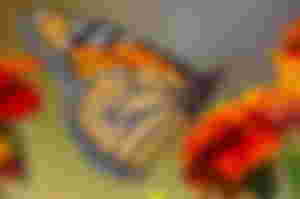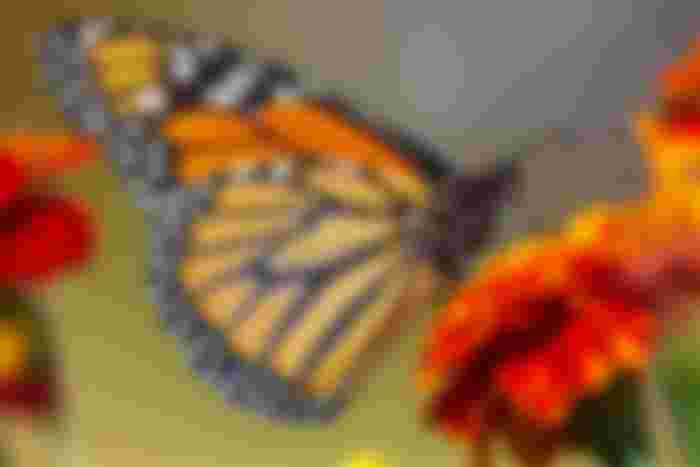Earth Day 2022: Time is Running Out
It's Earth Day again, guys, a period where much of the global community will reflect on its impact on Earth and the natural environment, and so, this morning, on the way to school, in order to broach the larger topic, I spoke to my sons about butterflies.

In my country, back when we were kids, there were flowers and, of course, butterflies everywhere, and we would run about catching and releasing them. The Monarch butterfly was very common. Today, you'd hardly see them. Our butterfly population is dwindling, not just in my country but around the world, and that's a serious concern because of the role they play in the eco-system.
A quick word of thanks to my sponsors. Guys, these are some awesome content creators and
all around genuine, great people that I have had the good fortune to interact with and
who have shown support for my work as well. Please show them some love.Butterflies under threat
In the article, 10 species in danger of extinction and what you can do to help, Kathleen McLeary lists the Monarch butterfly among the endangered species and notes that nearly 1 million other species face extinction in the coming years, thanks to warming temperatures, deforestation, development, overfishing and other human activities.
Of the Monarch butterfly, she quotes the president and CEO of the US National Wildlife Foundation, Collin O'Mara who says, "Beauty aside, pollinators are the basis of life... (Pollinators carry pollen in and between flowers of the same species, fertilizing them so they produce fruit and seeds.) They’re the connective tissue of all ecosystems. Without healthy pollinators, the impact on humans is devastating.”

Humans are at Fault
Sadly, though we admire the beauty of the natural environment and nature's creatures, we humans are very often responsible for destroying them.
When it comes to the butterflies, Ryan Hagerty of Defenders of Wildlife publishes, "Human development is threatening migratory and non-migratory butterflies by fragmenting migration pathways and destroying habitats."
He notes that while climate change, widespread pesticide use and invasive species impacting native host plants also threaten many butterfly species, the greatest threats are habitat change and loss due to residential, commercial and agricultural development.
Earlier this week, AP Science writer Seth Borenstein published the article, Under threat: How climate change and big agriculture are hurting insect populations. In it he discusses a new study published in the journal Nature Wednesday based on more than 750,000 samples of 18,000 different species of insects which focuses on the factors contributing to a decline in insect populations, among them butterflies.
"Scientists have noticed a dramatic drop both in total bug numbers and diversity of insect species, calling it a slow-motion death by 1,000 cuts," he writes. "Those cuts include pesticides and light pollution."
They also include habitat loss due to monoculture agriculture and higher temperatures from climate change.
Time is Running Out
Now, guys, this is not just a nostalgic post yearning for the Monarch butterflies, or any butterfly in particular, because they're beautiful. Of course they're beautiful to look at, but I think the threats they face are far more concerning than the wider population recognizes.
For many of us, the climate and environmental conservation is a fringe topic. It's discussed in school and in the science community or when the average Jane or Joe walks outside during the day and note how warm it's become. This is not general dinner conversation, but it's scary, because it is believed that butterflies, for example, are early and sensitive indicators of future change.
As Frontline notes, "Their reaction to environmental degradation or perturbations is amplified and rapid... The role of butterflies in assessing environmental quality in terrestrial ecosystems is crucial as their presence is a direct indicator of habitat quality and regional vegetation."
And so, friends, on this day, as we shift a bit from our conversation on butterflies for a bit and take a macro view of our impact on the environment, we can expect that there would be a lot of reflection and, in some countries, there are protests and calls for climate reparations from the wealthy nations whose industries have driven global greenhouse gas emissions.
I am hoping that collectively our actions extend beyond protest and reflection or, even, mourning for a declining population of butterflies. One Green Planet has issued a very dire warning: when it comes to protecting our Earth, it's now or never. The world has less than ten years to make a drastic change to combat global warming.
If we don't act soon, I fear, we'd probably wake up one morning, like the dinosaurs, to realize that there's no other loss to comment on or to reflect on or to protest about because we would be the ones on the verge of extinction, and by then it would be too late.
Resources


Let's do our part in preserving what we can preserve.